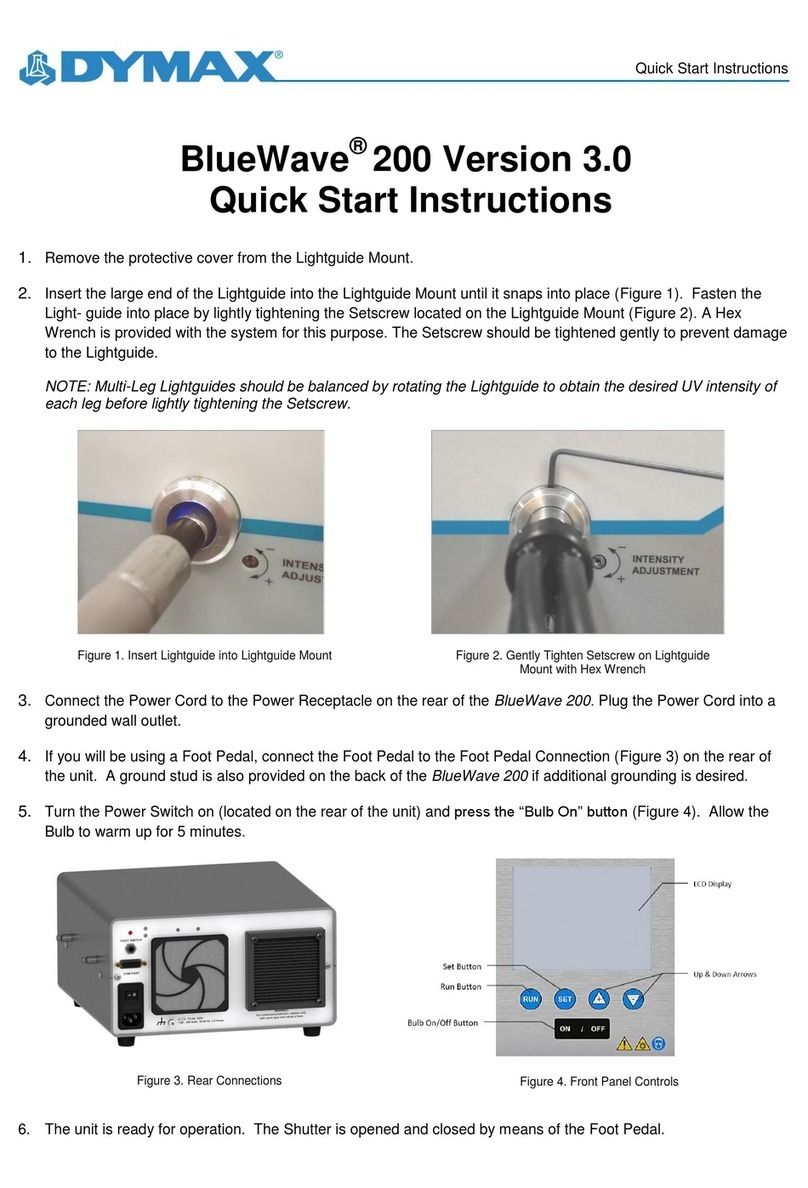Contents
Introduction ...............................................................................................................5
Introduction to the User Guide .............................................................................. 5
Where to Get Help ................................................................................................. 5
Safety.........................................................................................................................6
General Safety Considerations............................................................................... 6
Safety Symbol Index............................................................................................... 6
Specific Safety Considerations ............................................................................... 7
Dymax UV Light-Curing System Safety Considerations .......................................... 9
Product Overview.....................................................................................................11
Description of BlueWave MX-Series 1CH Systems ............................................... 11
Features & Benefits.............................................................................................. 14
Controller Front Panel.......................................................................................... 15
Controller Back Panel........................................................................................... 16
Unpacking ................................................................................................................17
Parts Included ...................................................................................................... 17
System Setup ........................................................................................................... 17
System Connections............................................................................................. 17
Modes of Operation ................................................................................................. 19
Manual Mode....................................................................................................... 19
Timer Mode.......................................................................................................... 19
PLC (Programmable Logic Controller) Operation ................................................. 20
Examples of PLC Wiring ............................................................................................ 23
Operation.................................................................................................................24
Control Screen...................................................................................................... 25
Irradiation ............................................................................................................ 27
Saving Programs................................................................................................... 28
System Settings ........................................................................................................28
Language Settings ................................................................................................ 29
Volume Settings ................................................................................................... 29
Brightness Settings............................................................................................... 30
User Settings/Boot Modes ................................................................................... 30





























